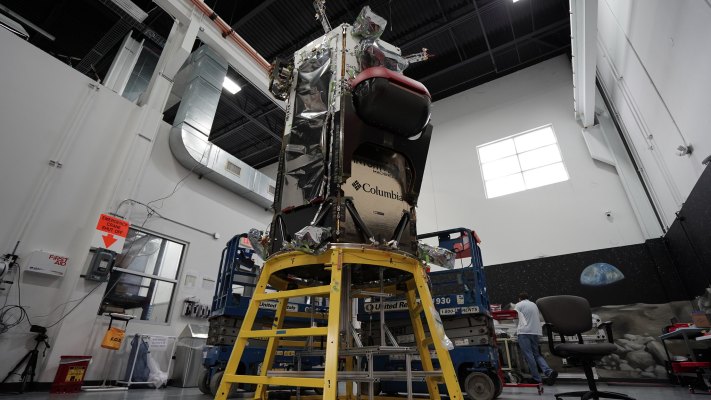Intuitive Machines is pushing back the mission of its first lunar lander to mid-February in coordination with launch provider SpaceX, the company said earlier this week.
The Houston, Texas-based company said that the new launch window “comes after unfavorable weather conditions resulted in shifts in the SpaceX launch manifest.”
The new launch target date, which is a full month after the original January 12-16 window, is due to the mission profile: Intuitive Machines’ Nova-C spacecraft is aiming to land near the lunar south pole, requiring specific lighting conditions that are only present a handful of days each month.
The company is further constrained by launch infrastructure availability. The lunar lander must launch from a specific launch site at NASA’s Kennedy Space Center, Launch Complex 39A, because it needs to be fueled with oxygen and methane propellants prior to launch. That pad is the only one equipped with a tower to make the lander accessible for fueling.
The original launch window would’ve set Nova-C to touch down on the moon around January 19 or shortly after, because the lander is taking a direct trajectory to reach lunar orbit. While Intuitive Machines did not specify an exact launch window, it’s looking increasingly likely that it could coincide with the planned landing of another privately developed lunar lander. That lander, Astrobotic’s Peregrine, is targeting a February 23 landing date on the moon — which means we could see two privately developed American spacecraft touch down on the lunar surface on the same week.
Both landers were developed as part of NASA’s Commercial Lunar Payload Services (CLPS) program, an initiative to solicit commercial landers for scientific and research payload delivery to the lunar surface. Nova-C will be carrying six payloads for NASA as part of this initial mission, and it has been awarded two additional CLPS contracts for lunar cargo delivery.
Overall, the new launch window is a negligible delay for Intuitive Machines, which is aiming to make lunar access a cornerstone of its business. According to a presentation released last September, when the company announced it would go public via a merger with a blank-check firm, Intuitive Machines expects to generate $279 million in revenue from its lander services next year alone.
Intuitive Machines is also setting up business segments related to orbital services, like satellite servicing and refueling, providing data services for the moon and the sale of other space products.
